It’s that time of year again, folks. Yup, that’s right, the fourth annual Hammer To Nail Awards are here! This year started with a righteous bang in Park City, where at the Sundance Film Festival, movie screens throbbed with a reckless, go-for-broke spirit. From the results below, it’s clear that most of the films that electrified audiences there—and subsequently landed distribution—electrified us as well. From micro-budget DV works with a Southern literature flair (Lord Byron) to celluloid-photographed experimental mind-f**ks (The Oregonian) to mesmerizing breakout debuts (Martha Marcy May Marlene), 2011 supports the theory that one doesn’t need many millions of dollars to make truly ambitious cinema. If anything, it justifies our purpose for launching this site. We believed it then and we believe it now: the most daring, original, and exciting work doesn’t come out of Hollywood; it sprouts from within these seemingly constricted margins.
That realization has perhaps never been more startlingly expressed than in our number one film of the year. At this moment in time, Jeff Nichols’ Take Shelter might seem like it has some sort of unfair advantage over all the other nominees, to the point where it might not even belong on this list. But back in the summer of 2010, before Sony Classics was involved and before anybody knew who Jessica Chastain was, a group of hungry filmmakers scraped together some money, relocated to Ohio, and cashed in as many favors as possible in order to make a motion picture that wouldn’t have any low-budget chips on its shoulder. It would provide chills and thrills, but, more importantly, it would also say something deeply poignant about the unsure real world in which we currently live. The result of all that risk and toil paid off. Take Shelter has transcended its humble beginnings and budgetary limitations in order to compete with the priciest Hollywood spectacles. This feat deserves to be rewarded, not second-guessed or criticized. And so reward it we have.
Last year, we decided not to grant a Golden Hammer or Silver Nail award, but in 2011, two names jumped out at us as sterling examples of the very best that the modern American independent spirit has to offer. Congratulations to this year’s winners. We hope they find the support to continue teaching, enlightening, and entertaining us with their remarkable gifts.
To clarify, here are our general voting parameters:
1) American narrative features produced for one million dollars or less.
2) The film had its first public release—theatrically, VOD, DVD—in said calendar year.
3) No HTN contributor is allowed to vote for a film in which they have a cast/crew credit (i.e., Ted Hope was not allowed to vote for Martha Marcy May Marlene, David Lowery did not vote for St. Nick, Alex Ross Perry did not vote for Impolex or suggest The Color Wheel, and—for obvious reasons—my own 2011 movie was disqualified from Top Films consideration).
4) Each contributor ranks their films in order from 1 (highest) to 10 (lowest). The number 1 film receives 10 points; 2 receives 9 points; etc. These results are then added up in order to calculate our winners.
5) This type of thing is never a perfect science. For example, not everybody got to see every applicable film that was released in 2011. In 2012, our goal is to create an internal system that will hopefully help soften this problem.
GOLDEN HAMMER
Just a few months ago, when it appeared that the year was winding down and nothing new was on the horizon with regards to indie film discoveries in 2011, I received an email from filmmaker Dave Boyle (Surrogate Valentine, White on Rice), who wrote to tell me about a film he saw at the Hawaii International Film Festival that blew him away. It was called In The Family and it was made by a first time writer/director named Patrick Wang (who also acted in the film’s most pivotal role). Shot on the Red and exhibited on 35mm, In The Family had a run time of 169 minutes and was composed primarily of master takes, most of which involved a six-year-old. It also had a 32-minute deposition scene of a climax! An immediate bit of searching led me to the knowledge that the film was actually opening the very next week at the Quad Cinema in Manhattan. Without having seen it myself, I asked if Dave would like to write a review of the film, making it our Pick of the Week at the Filmmaker Magazine blog. Though he doesn’t consider himself a critic, Dave jumped at the opportunity to spread the word. Around this time, glowing reviews also emerged from the NYTimes, Slant Magazine, and more.
That opening Friday afternoon, I went to see the film for myself. Dave was right. In The Family is, in its own way, as ambitious an American epic as The Tree of Life or Margaret. By taking his time in telling this heartfelt tale of a custody battle in Tennessee that is further complicated by issues of homosexuality and race and family bloodlines, Wang has delivered a work of grand humanism that sits alongside a bona fide classic like To Kill A Mockingbird. And all this from a theater-trained actor/director who had never previously made a film??? Stunned by this realization, I tracked down Wang in order to figure out just who this hotshot thought he was. It turns out, he’s an intelligent, thoughtful, creative soul who had a story to tell, had some money at his disposal, and decided to throw caution to the wind and make a movie (read our Conversation With Patrick Wang if you haven’t already). Anyone who sees In The Family will be thankful that he did.
Wang’s achievement in simply making this film is worthy of an award, but the fact that In The Family was somehow overlooked by dozens of film festivals, forcing him to take matters in his own hands by booking the film at the Quad, makes his determination all the more admirable. A recent Spirit Award nomination for Best First Feature has also helped to raised the film’s profile. One hopes that this is only the beginning and that a distributor will see the potential in this truly accessible drama. Back in that theater, as those nine reels of 35mm finished unspooling and the lights came up, I sensed a collective sense of awe and appreciation for Wang’s deeply humane and affecting film. For making In The Family, and for persevering in the face of so much incomprehensible rejection, we are proud to present Patrick Wang with this year’s Golden Hammer Award. (Michael Tully)
SILVER NAIL
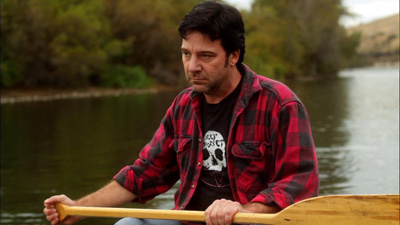 Some noticed it when the Sundance lineup was announced last year; others began to connect the dots during the festival itself. There was a unifying factor amongst many of the movies screening in Park City in 2011, and its name, his name, was Robert Longstreet. He appeared in a total of four pictures over the course of those ten frigid days—The Catechism Cataclysm, Take Shelter, The Oregonian, Septien—enough to secure him the undisputed World Record for appearances in Sundance-selected films within the same year (two months later at SXSW, he popped up in Berndt Mader’s Five Time Champion).
Some noticed it when the Sundance lineup was announced last year; others began to connect the dots during the festival itself. There was a unifying factor amongst many of the movies screening in Park City in 2011, and its name, his name, was Robert Longstreet. He appeared in a total of four pictures over the course of those ten frigid days—The Catechism Cataclysm, Take Shelter, The Oregonian, Septien—enough to secure him the undisputed World Record for appearances in Sundance-selected films within the same year (two months later at SXSW, he popped up in Berndt Mader’s Five Time Champion).
This secret revealed up in the mountains twelve months ago was one which a select few were already privy to: Robert Longstreet is one of the best actors in American cinema. He’s also one of the hardest working. I came to know him through the 2007 Sundance title Low And Behold. Others saw him for the first time in David Gordon Green’s Undertow or Pineapple Express. Before any of those, there was Onur Tukel’s Ding-A-Lingless. Every filmmaker who sees him in a film always says the same thing: “I want to work with this guy.” Based on last year’s Sundance, a lot of those filmmakers finally did.
What’s immediately apparent upon viewing a Robert Longstreet performance is how appealing his screen presence is, regardless of whether a particular role has him playing a raging asshole or mooning the camera or reconnecting with a long-lost family member or beating his wife or firing his best worker or shedding an honest-to-goodness tear. What isn’t as apparent is how committed, passionate and downright in love with the medium he is behind the camera. Look closely at the titles of some of those films he appeared in and you’ll notice that he holds an executive producer credit on a number of them. These aren’t token credits. He gives these little movies his all, and that often includes making sure they happen in the first place. He does this not because he likes to show off, or because he wants to secure a juicy part. He does it because he loves movies, as well as the folks who make them (as if the aforementioned projects weren’t enough, he also contributed to several more Kickstarter campaigns in 2011).
Those folks love him back. And audiences, slowly but surely, are realizing that they share the sentiment. As this year draws to a close, I think it’s time we take a moment to note this reciprocation—overdue and still in its infancy, but swelling up all the same, and so surely deserved: Robert Longstreet is The Actor of 2011. (David Lowery)
THE TOP 14 FILMS OF 2011
12. Redland (Asiel Norton, 15 points/2 mentions) — Though the influence of its cinematic forebears is readily apparent, nary a film comes to mind whose approach is as singularly visual as Asiel Norton’s Redland. Words prove woefully insufficient in conveying its imagistic intensity, but a few descriptions nonetheless come to mind: an aged photograph come to life, key aspects of which are out of focus or otherwise difficult to discern; a visual tone poem saturated in golden light from the seemingly alien sun hovering over it. Complemented by ruminative voiceovers that serve mostly as further reminders of words’ inability to express what images so easily can, this light dominates tonally as well as visually. And though they lean into the sun, Norton’s characters aren’t basking in its glow so much as avoiding the innate darkness contained within: Redland is defined by its light, but it’s also painfully aware of its shadow. (Michael Nordine) Read The Full HTN Review
************************************************************************************************************************************************************************
12. General Orders No. 9 (Robert Persons, 15 points/3 mentions) — General Orders No. 9 is one of those films where the adjectives used to describe it—dense, meditative, reflective, confounding—are intended as compliments, yet they will be mistaken by many for pejoratives. And while it would be stubborn and ignorant to think that everyone will respond to it with open arms, its refusal to speak to anyone except itself is what makes it stand proudly on its own mountain. This first film (how is that possible?!) by Robert Persons is a thoroughly absorbing, hypnotizing experience. Persons’s lifelong passion for the arts—painting, poetry, literature, cinema—is reflected in each and every frame. And while one could write tomes about it, ultimately General Orders No. 9 must be experienced for oneself in order to truly grasp what Persons is saying. (Michael Tully) Read The Full HTN Review
************************************************************************************************************************************************************************
12. Pariah (Dee Rees, 15 points/4 mentions) — Dee Rees‘ tough coming of age tale is a study in the ways in which young blacks caught between social worlds are often forced to wear emotional and physical masks. Rees’ film, which suggests that traditional African-American social and cultural mores often don’t make room for young queer women, exhibits a sensitivity to the nuances of class and style among city-dwelling blacks that is truly rare in American cinema. While it falls into the Precious trap, once again having a black mother as the moral fall guy (or gal), it isn’t because of destitution, or drug use, or poverty, or neglect; it’s the far more common affliction of over-protection and ignorance, of a muddled understanding of one’s responsibilities as a Christian woman to love above all else. Aided by her remarkably talented cinematographer Bradford Young, who brought a similar grace to the palette and shooting style of the under-appreciated 2009 Slamdance entry Mississippi Damned (perhaps still the best recent American independent film without theatrical distribution), Rees has made a film that signals the beginning of long, fruitful career for herself and her fantastic young lead Adepero Oduye. (Brandon Harris) Read The Full HTN Review
************************************************************************************************************************************************************************
11. Putty Hill (Matthew Porterfield, 19.5 points) — With Putty Hill, Porterfield has made good on all the promises of Hamilton, creating a film that is at once more redolent and reticent, but that also takes his narrative experimentation another step forward. Returning once more to Baltimore, Porterfield this time explores a group of characters that have all been affected by the death of a young man, Cory, who never appears in the film expect for a photograph at his wake. Up until the penultimate scene, the characters are all shown individually, an effective narrative strategy that underscores the deep sense of isolation that runs throughout the picture. But as much as Cory is the element that binds the characters together, the story is less about him than it is the people that he knew. Each successive scene adds a little bit of pigment to the canvas, but the portrait of Cory remains incomplete. His enigma, however, serves a double purpose. On the one hand, it reminds everyone of their own transience (which seems to last forever, evoking a similar feeling as in Hamilton), but Cory’s mystery also comes to represent the limits of understanding, for both the characters and the audience. Just as his friends silently struggle to grasp his motivation, so do the vague suggestions of addiction and capitulation make Cory seem more real than any concrete facts. In this way, Porterfield also avoids any preachy messages and shows the utmost respect for the characters of Putty Hill. By not presuming to “know” them, he lets them live a little, and allows that their lives are bigger than the hour and a half run time. (Cullen Gallagher) Read The Full HTN Review
************************************************************************************************************************************************************************
10. The Oregonian (Calvin Lee Reeder, 21 points) — Aptly described by its director as ‘art-horror,’ The Oregonian is less a horror movie than a horrifying movie. An aural odyssey as well as a visual one, the scratched, grainy, at times ‘long-lost-stock-footage’ feel of the film is augmented by one of the most layered and intense soundscapes I have heard in some time, nudging the film closer in tone and presentation to an experimental work than narrative. It succeeds as both; be washed over by its layers of images, noises and pulses and you’ll find one of the most thoroughly realized films of this, or any other, year. (Alex Ross Perry)
************************************************************************************************************************************************************************
9. Lord Byron (Zack Godshall, 30 points) — Lord Byron is Godshall’s third feature, after Low And Behold and God’s Architects. Here, as with those films, the Louisiana-based Godshall has drawn from a Southern pot of gumbo to deliver another peculiar dose of ecstatic truth. There are many valid cinematic references for Lord Byron—Slacker, Werckmeister Harmonies, Down By Law, just to name a few—but based on its production value alone, there is an unfortunately more direct correlation to those well-intentioned-but-just-not-up-to-snuff local productions one encounters at tiny regional festivals everywhere. So what makes Godshall’s vision so different? Though it may have a similar look and “feel,” Lord Byron’s ace in the hole is one powerful word: literature. By wielding their camera like a pen, Godshall and his creative collaborator Russ Brupbacher have plunged deep into the bayou’s soul, whereas most other work of this ilk just skitters on the surface. We’re supposed to compare movies to other movies, but when I try to do that with Lord Byron, the names John Kennedy Toole, Walker Percy, and Carson McCullers instead spring to mind. (MT) Read The Full HTN Review as well as “Revolution and Apocalypse: The Lord Byron Manifesto”
************************************************************************************************************************************************************************
8. The Catechism Cataclysm (Todd Rohal, 32.5 points) — Todd Rohal’s The Catechism Cataclysm isn’t a vengeful attack, nor is its purpose easily interpreted. Much like the non-sequitur stories that Father Billy relates as hopeful parables, there’s never any understanding or morale behind what this movie is. There is, however, plenty of thought that comes across when we take into account why Robbie is so willing to join Billy, despite the fact he can’t even remember who he is until the film’s insane third act. It’s a desire to see what comes next, even if everyday life is nothing more than sound-checking guitars and driving a Zamboni. It’s about finding the end of the journey, no matter what happens if God is merely out there to fuck shit up in the form of two homicidal Japanese tourists with a Mark Twain obsession, or if your head is destined to be exploded and replaced by a rock. (John Lichman) Read The Full HTN Review as well as A Conversation With Todd Rohal
************************************************************************************************************************************************************************
7. Bad Posture (Malcolm Murray, 38 points) — After taking a bow in Rotterdam, where its lugubrious cadences and droll humor were well appreciated, Malcolm Murray’s film has played here and there, winding its way around the margins of AmerIndie Festivaland. Perhaps I find Bad Posture so enjoyable, so much more enjoyable in fact than the broad majority of indies that have found American screens this year, because with its arthouse rhythms gently propelling a pumped up, ostensibly naturalistic story of romantic longing amidst post-adolescent criminality, it never creates a sense of expectation for what exactly you are going to see next. It is more interested in feeling, landscape, and boredom. You know, the things that make up most of our lives. (BH) Read The Full HTN Review
************************************************************************************************************************************************************************
6. 3 Backyards (Eric Mendelsohn, 40 points) — Eric Mendelsohn’s 3 Backyards is a truly ambitious and inventive work that speaks not only through acting and plot, but through Mendelsohn’s savvy directorial control of music, lensing and pacing. The film’s stylistic choice of ’70s-era American New Wave grammar is a joy to behold on the big screen. I can’t remember the last time I saw so many lens flares and long slow rack zooms. The narrative moves at a pace that recalls the best of those Euro-influenced American New Wave films from the 1970s that were allowed, for a short time, to explore oblique themes through small dramatic events. (Mike S. Ryan) Read The Full HTN Review
************************************************************************************************************************************************************************
5. Cold Weather (Aaron Katz, 45.5 points) — Reuniting with Quiet City‘s Cris Lankeneau, Aaron Katz and his production team (Brendan McFadden, Ben Stambler) return to the Pacific Northwest environs of Katz’s debut feature, Dance Party USA, to tell the story of a brother-sister reunion (Lankenau and Trieste Kelly-Dunn) that begins as a subtle character study but unexpectedly morphs into a full-on detective thriller. Working once again with cinematographer Andrew Reed, who maximizes the potential of the Red camera here, Katz uses a muted color palette, a slow-moving camera, and his own sharp editing to create a rising air of tension that boils over into the second half’s action-packed sequences. Cold Weather is a deft, original addition to the noir genre and is another impressive creative statement by the uber-talented Katz. (MT)
************************************************************************************************************************************************************************
4. In The Family (Patrick Wang, 55 points) — In The Family is a monumentally ambitious film that tackles some of the biggest themes imaginable—identity, family, sexual politics, life itself—but presents itself in such a modest and unassuming way that its emotional wallop feels genuine and earned. In addition to writing and directing, Patrick Wang also stars as Joey Williams, a contractor in Tennessee who has a happy life with his partner Cody (Trevor St. John) and their son Chip (played by the amazingly natural Sebastian Brodziak). The movie settles into a natural rhythm as it allows the audience to learn about the characters through quiet observation rather than blatant exposition. Wang takes big risks in his direction and writing, almost as though every decision were made in response to a dare. (Dave Boyle) Read The Full HTN Review as well as A Conversation With Patrick Wang
************************************************************************************************************************************************************************
3. Bellflower (Evan Glodell, 63 points) — Bellflower, which features its writer/director Evan Glodell in the lead role, teeters at times into near satire with a Crispin Glover circa River’s Edge manic energy, but the story and the performances always in the end seem rooted in its sincere genuine intentions. Despite the pyrotechnics and manic mondo energy there is a bedrock sincere apocalyptic worldview that perfectly suits the age of the characters as they struggle to find their place in the world and restore some piece of self-identity after the turmoil of first love gone bad. Without a doubt, Bellflower is an explosive, outrageous, and dynamic first film that lives way outside the margins of what we call indie film today. (MSR) Read The Full HTN Review
************************************************************************************************************************************************************************
2. Martha Marcy May Marlene (Sean Durkin, 67 points) — Looking at Elizabeth Olsen, you know exactly who she’s related to. It’s a trait that lends the actress both familiarity and strangeness—as though you know her but you don’t. It also makes her perfect for the title role in Sean Durkin’s Martha Marcy May Marlene. One glance is never enough here; you have to stare, then turn the image over in your mind in order to come close to understanding what it is you’ve seen. No one in the film can quite reach Martha—AKA Marcy May, AKA Marlene, names given to her by a cultish patriarch named Patrick (John Hawkes) who takes her in under circumstances we only catch glimpses of—so it follows that we shouldn’t be able to, either. But, just as Martha’s sister on one side and her fellow indoctrinates on the other have the advantage of not only observing but interacting with her, the audience has one, too: we’re able to see both sides of her. That this only partially satisfies the question of who this young woman is speaks not only to the depth of the character but also to that of the film which carries her name–or names, rather. (MN) Read The Full HTN Review as well as A Conversation With Sean Durkin
************************************************************************************************************************************************************************
1. Take Shelter (Jeff Nichols, 97 points) — Take Shelter is a modern American masterpiece. Jeff Nichols’ fusion of everyday, real world concerns with a classical approach to storytelling and cinema does more than just distinguish him from the rest of his peers. While he displayed a confidence and control in his pitch-perfect debut feature Shotgun Stories, Take Shelter finds Nichols working on an altogether more accomplished level. In light of Hurricane Irene—to name just one recent natural calamity—and the continually shrinking economy, this film couldn’t be timelier. As if the devastating emotional impact weren’t enough, the actual production means with which this Hollywood-ready production was made truly boggles the mind. Adam Stone’s typically excellent wide-screen 35mm cinematography, David Wingo’s foreboding orchestral soundtrack, the CGI work by visual effects giants Colin and Greg Strause, the assured performances from outright movie stars Michael Shannon and Jessica Chastain (as well as highest-bar supporting actors like Shea Whigham, Kathy Baker, and this year’s Silver Nail winner Longstreet), all make Take Shelter more than just Spirit Awards ready. They make it Oscar worthy. (MT) Read The Full HTN Review
************************************************************************************************************************************************************************
Other Films Receiving Votes (In Alphabetical Order):
Another Earth (Mike Cahill)
Art History (Joe Swanberg)
Circumstance (Maryam Keshavarz)
Cook County (David Pomes)
Dog Sweat (Hossein Keshavarz) [A Conversation With Hossein Keshavarz and Maryam Azadi]
Gabi on the Roof in July (Lawrence Levine)
Gun Hill Road (Rashaad Ernesto Green) [A Conversation With Rashaad Ernesto Green]
Higher Ground (Vera Farmiga)
The Imperialists Are Still Alive! (Zeina Durra)
Impolex (Alex Ross Perry)
Kinyarwanda (Alrick Brown)
Like Crazy (Drake Doremus)
Littlerock (Mike Ott)
Reversion (Mia Trachinger)
Silver Bullets (Joe Swanberg)
St. Nick (David Lowery)
Stake Land (Jim Mickle)
Surrogate Valentine (Dave Boyle) [HTN Review]
Turkey Bowl (Kyle Smith)
Two Gates of Sleep (Alistair Banks Griffin)
Vacation! (Zach Clark)
************************************************************************************************************************************************************************
Films That Premiered in 2011 But Have Yet To Receive Some Form Of Release (In Alphabetical Order):
Bad Fever (Dustin Guy Defa)
Codependent Lesbian Space Alien Seeks Same (Madeleine Olnek)
The Color Wheel (Alex Ross Perry)
The Dish & The Spoon (Alison Bagnall)
Green (Sophia Takal)
Jess + Moss (Clay Jeter)
On The Ice (Andrew Okpeaha MacLean)
Return (Liza Johnson)
Think of Me (Bryan Wizemann)
Two Years At Sea (Ben Rivers)
Without (Mark Jackson)
***DEAR READERS: PLEASE CONTRIBUTE YOUR OWN THOUGHTS, IDEAS, OPINIONS, SUGGESTIONS IN THE COMMENTS SECTION BELOW! WE WERE ALSO PLANNING TO LAUNCH AN AWARD FOR THE NON-AMERICAN FILM THAT BEST REPRESENTED THE HTN SPIRIT BUT THINGS GOT TOO COMPLICATED. I’VE ASKED OUR CONTRIBUTORS TO SIMPLY ADD THEIR OWN PICKS FOR THIS AWARD IN THE COMMENTS SECTION BELOW.***
(Contributors: Tom Hall, Brandon Harris, Holly Herrick, Ted Hope, Nelson Kim, Michael Lerman, John Lichman, Susanna Locascio, David Lowery, Michael Nordine, Alex Ross Perry, Mike S. Ryan, Michael Tully)







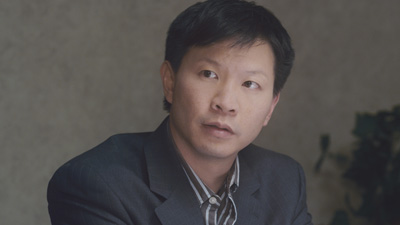
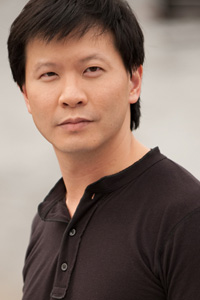
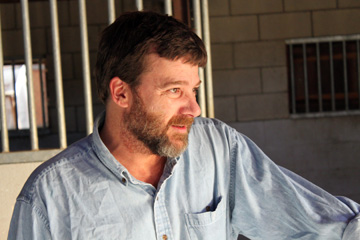
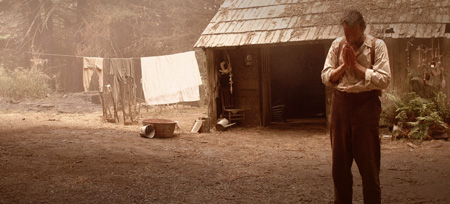
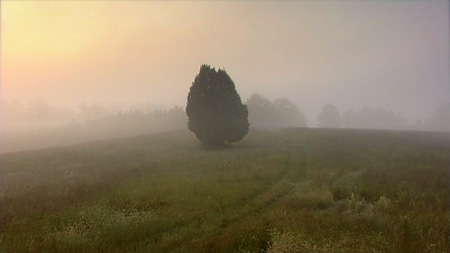
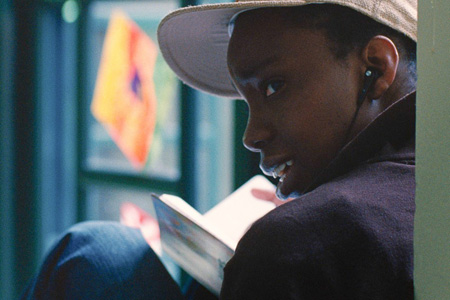
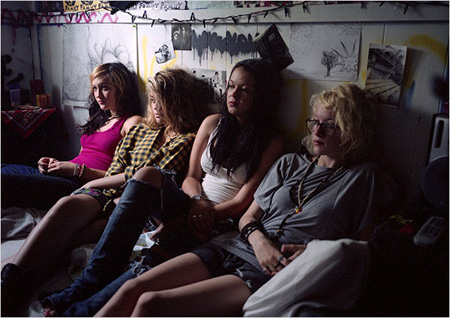
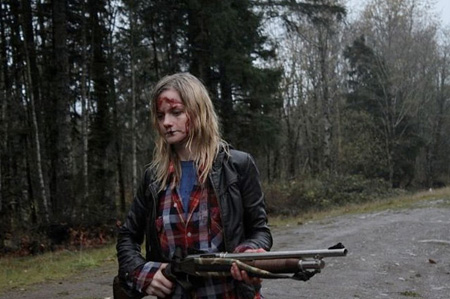
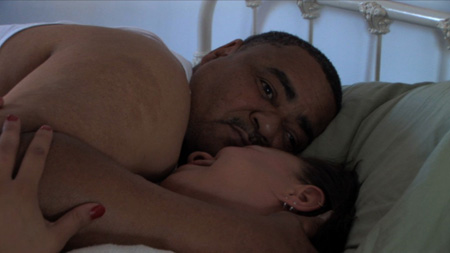
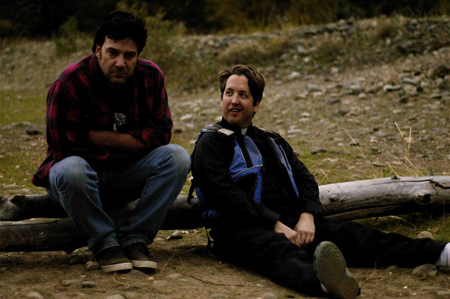
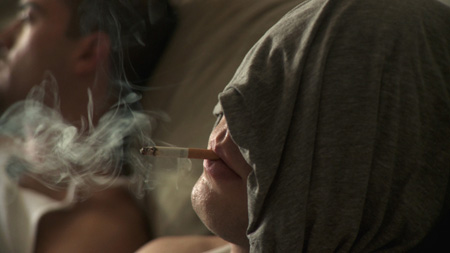
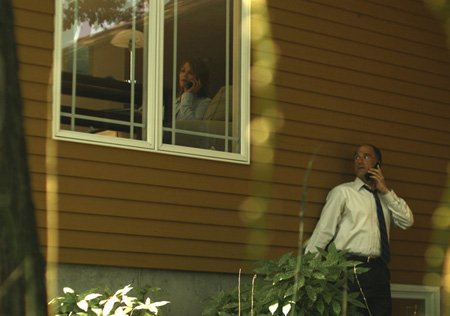

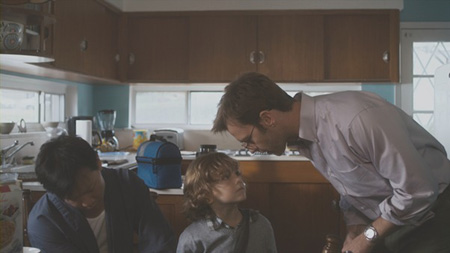
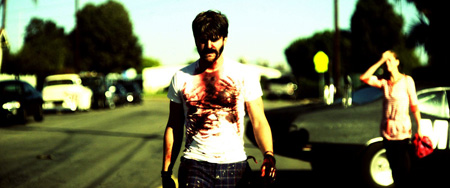
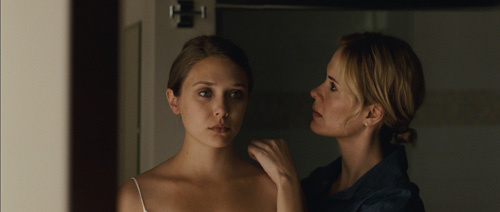
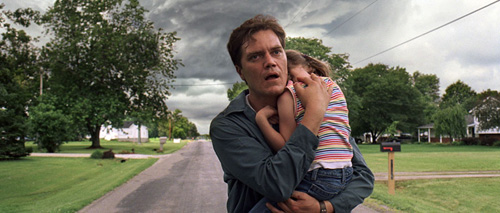



Tully
I suppose I’ll kick things off down here by handing out my “Green Card Award” to Andrew Haigh’s WEEKEND, which remains one of the most lingering experiences of the year for me (I saw it twice, in fact).
Tim
Why the exclusion of documentary? Will they get their own list?
Tully
Sorry, Tim, but no nonfiction. We started this site with the primary purpose of being “experts” on low-budget American narrative cinema, so while we make sure to cover films of all shapes, sizes, and genres throughout the year, we really want to keep our year-end awards distinct by sticking to the above guidelines. But if you check my own personal overall Top 10 list for the indieWIRE poll, you’ll see that NOSTALGIA FOR THE LIGHT was my overall favorite film of 2011. Hope this explanation makes some sort of sense.
Micah Van Hove
Great writeup. Great list.
Thibaut Davoult
Was detention
Michael Nordine
Yeah, a $1M budget is the cutoff.
Pingback: ifp | Independent Filmmaker Project
Pingback: HOME VIDEO PICKS – Hammer to Nail
Madison Ava Jones
Just watched Take Shelter. Are you kidding me? “modern American masterpiece”? I should have guessed with hyperbolic B.S. lingo like that that it would be some pretentious slow-moving pseudo-art crap. I didn’t turn it off as soon as Bellflower but it was close. This list makes the Oscar voters look like mavericks. This site is just becoming depressing. It makes me want to watch the kids being bullied beat each other up.
Tully
Very entertaining response, Ms. Jones. Thanks for reading. Just out of curiosity, I’d wonder if you could supply your own Top 10 Films of 2011 so I can see where your viewing taste buds reside. Maybe in the future we can try to cover some unpretentious fast-moving non-pseudo-art crap for ya.
Pingback: HOME VIDEO PICKS – Hammer to Nail
Pingback: SHORT FILM CONTEST WINNER/RUNNER-UP: FEBRUARY 2012 – Hammer to Nail
Xmliqq2012
バーバリー
バーバリーマフラー
バーバリー財布
バーバリー アウトレット
バーバリーバッグ
ティンバーランド
ティンバーランド ブーツ
ティンバーランド 靴
ルブタン
クリスチャンルブタン
グッチ
グッチバッグ
グッチ 財布
ノースフェイス
ノースフェイスアウトレット
モンクレール
モンクレールアウトレット
モンクレールダウン
ティンバーランド
ティンバーランド ブーツ
ティンバーランド 靴
Pingback: HOME VIDEO PICKS – Hammer to Nail